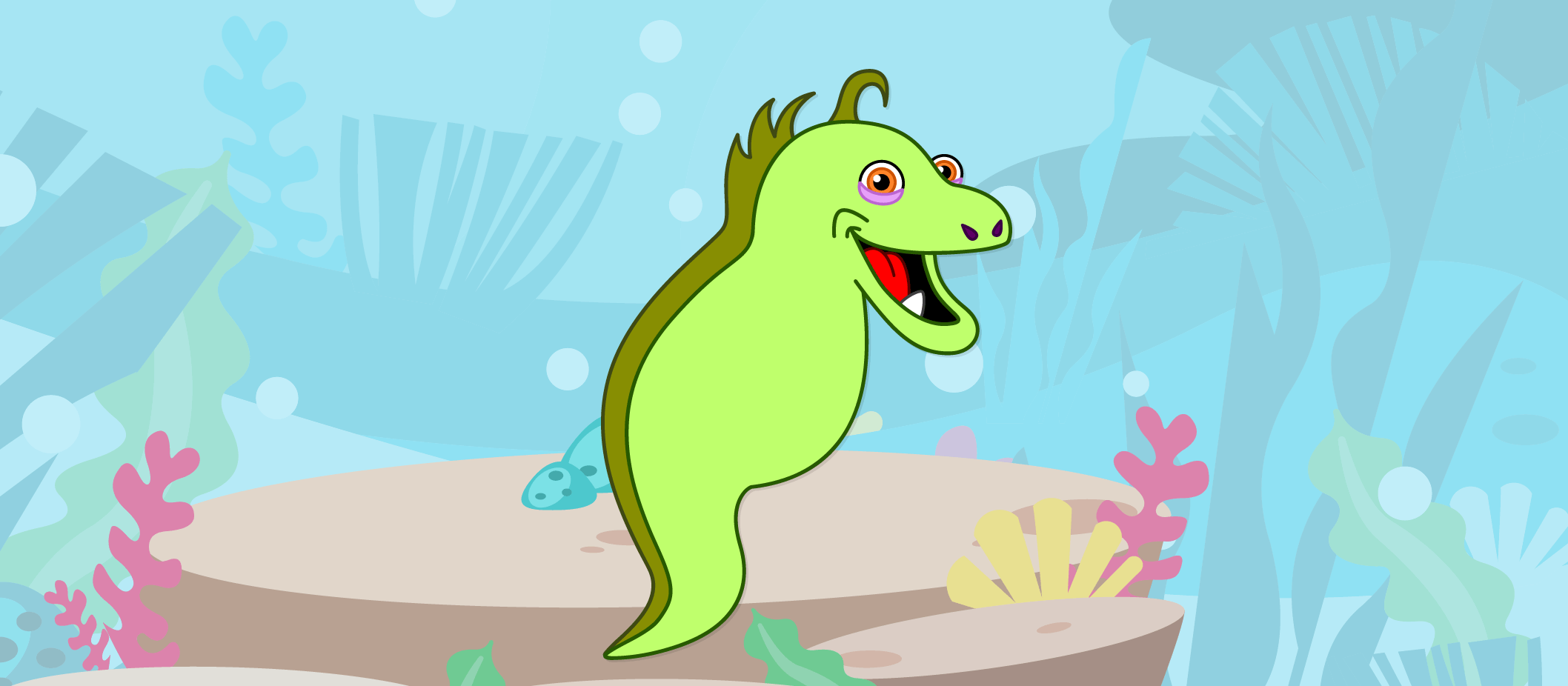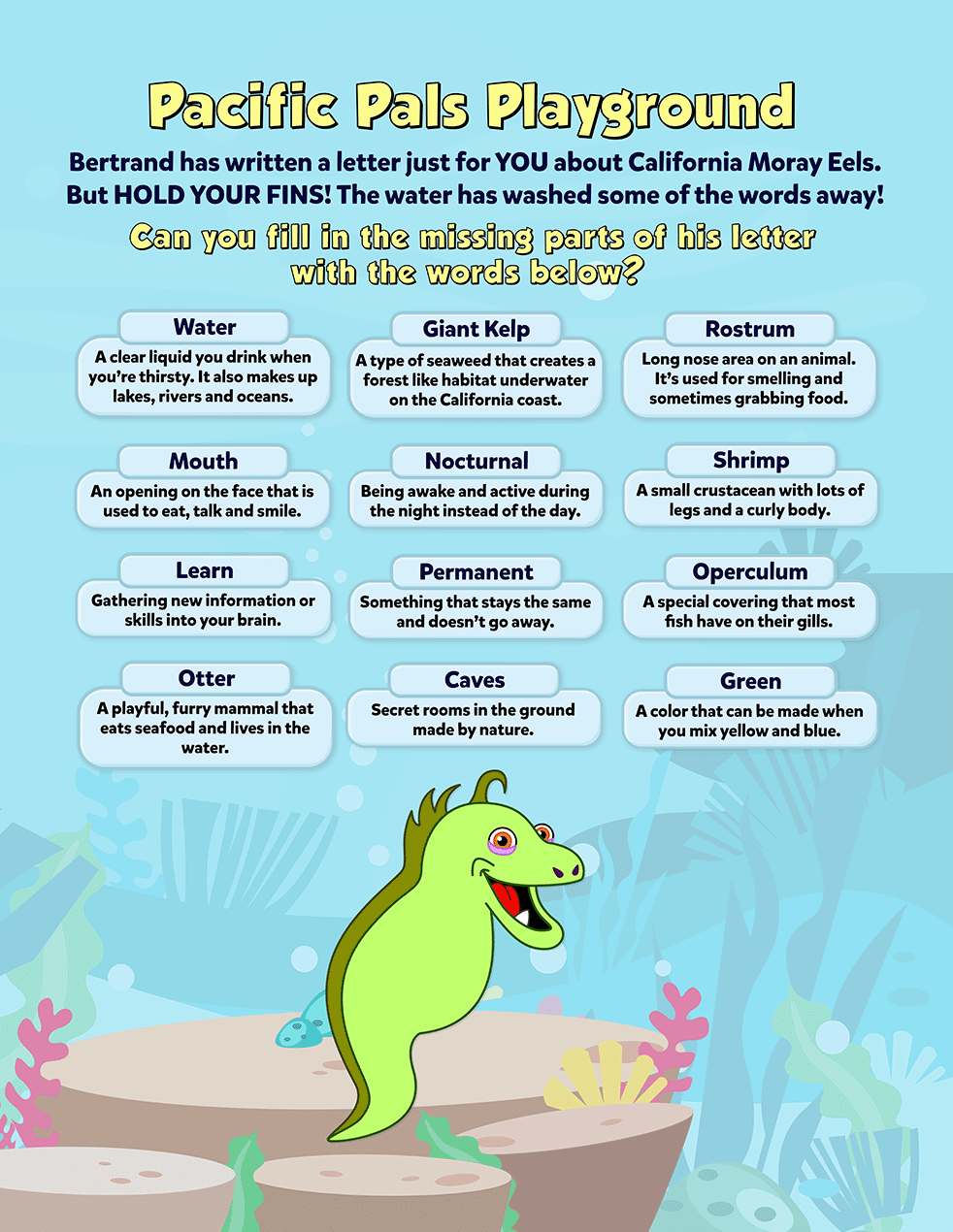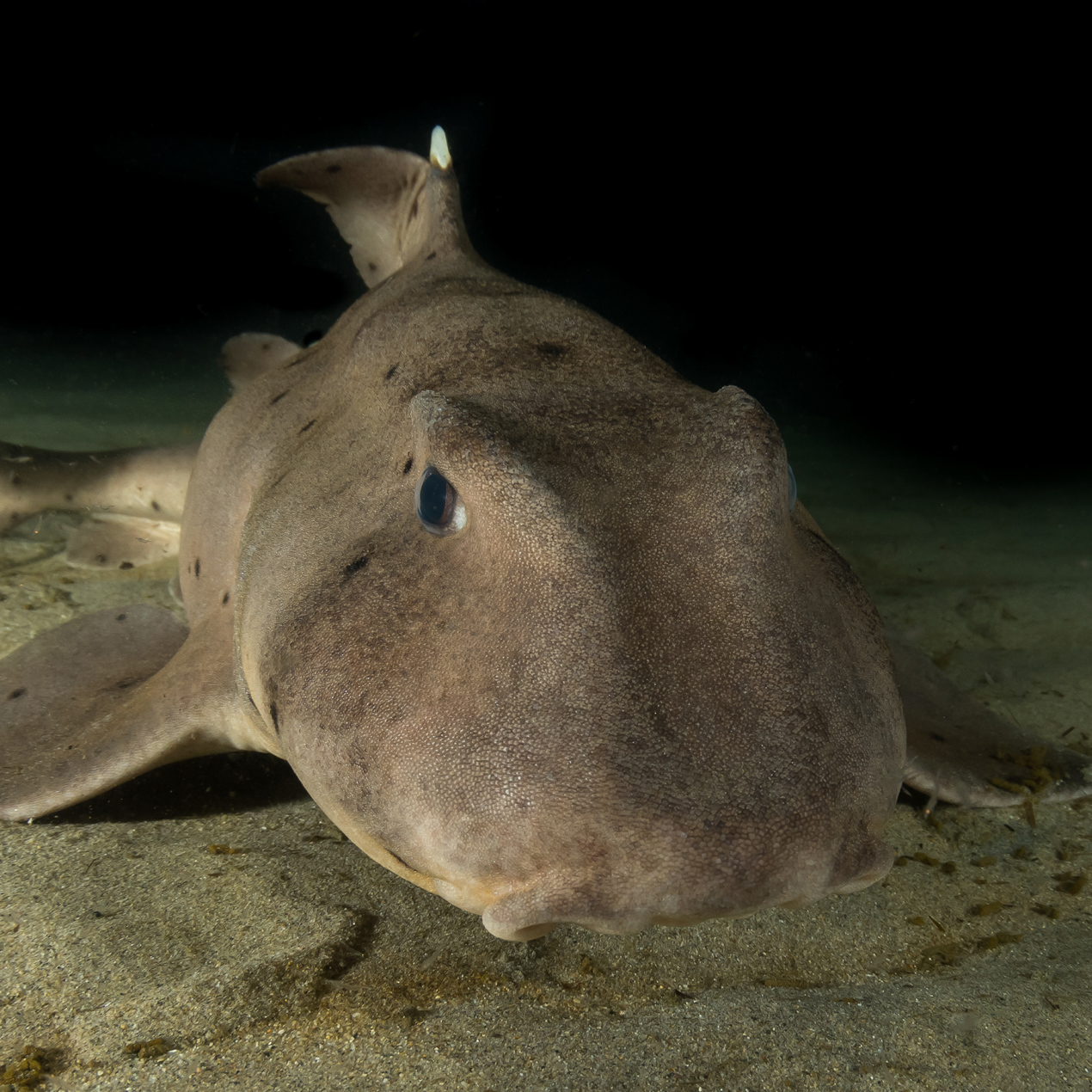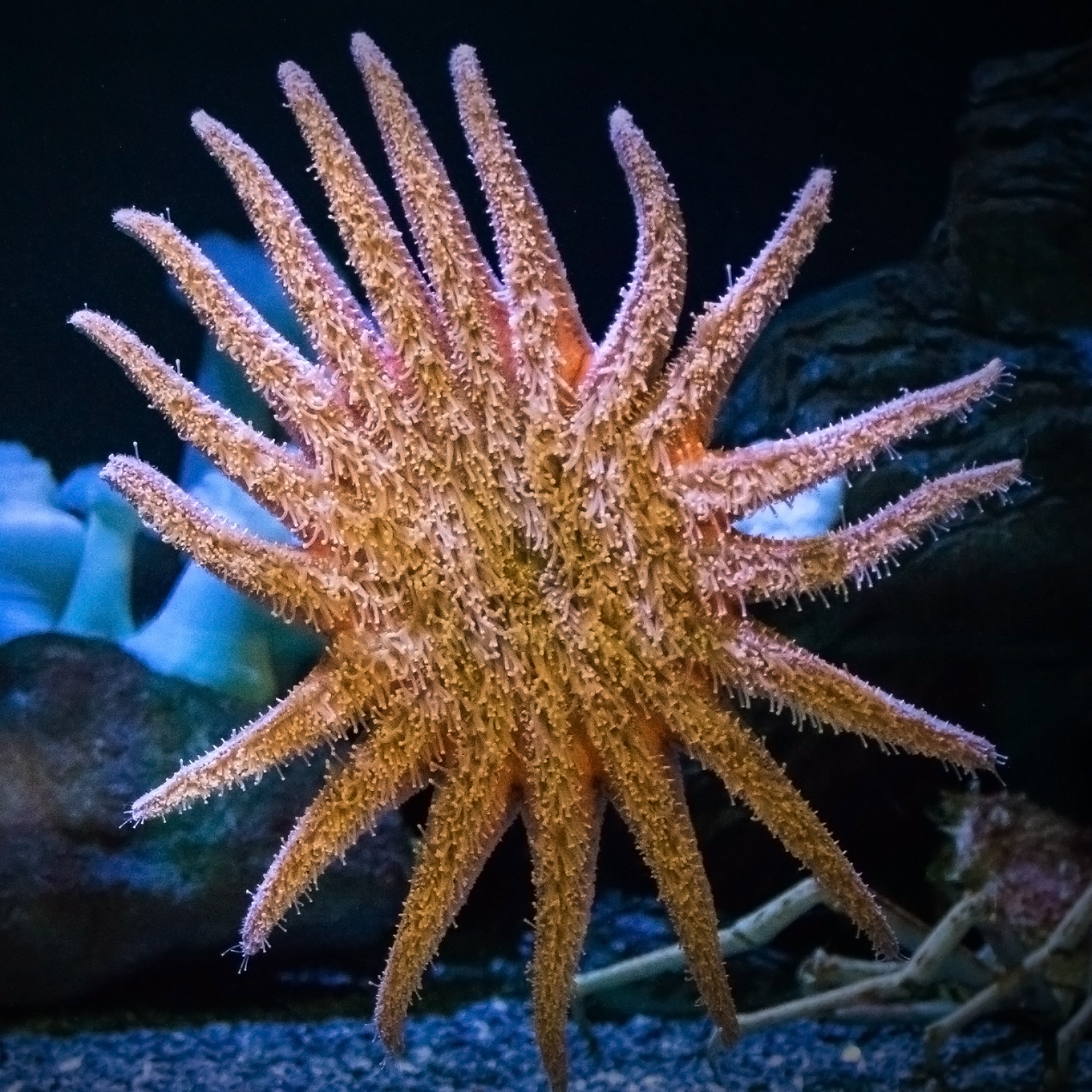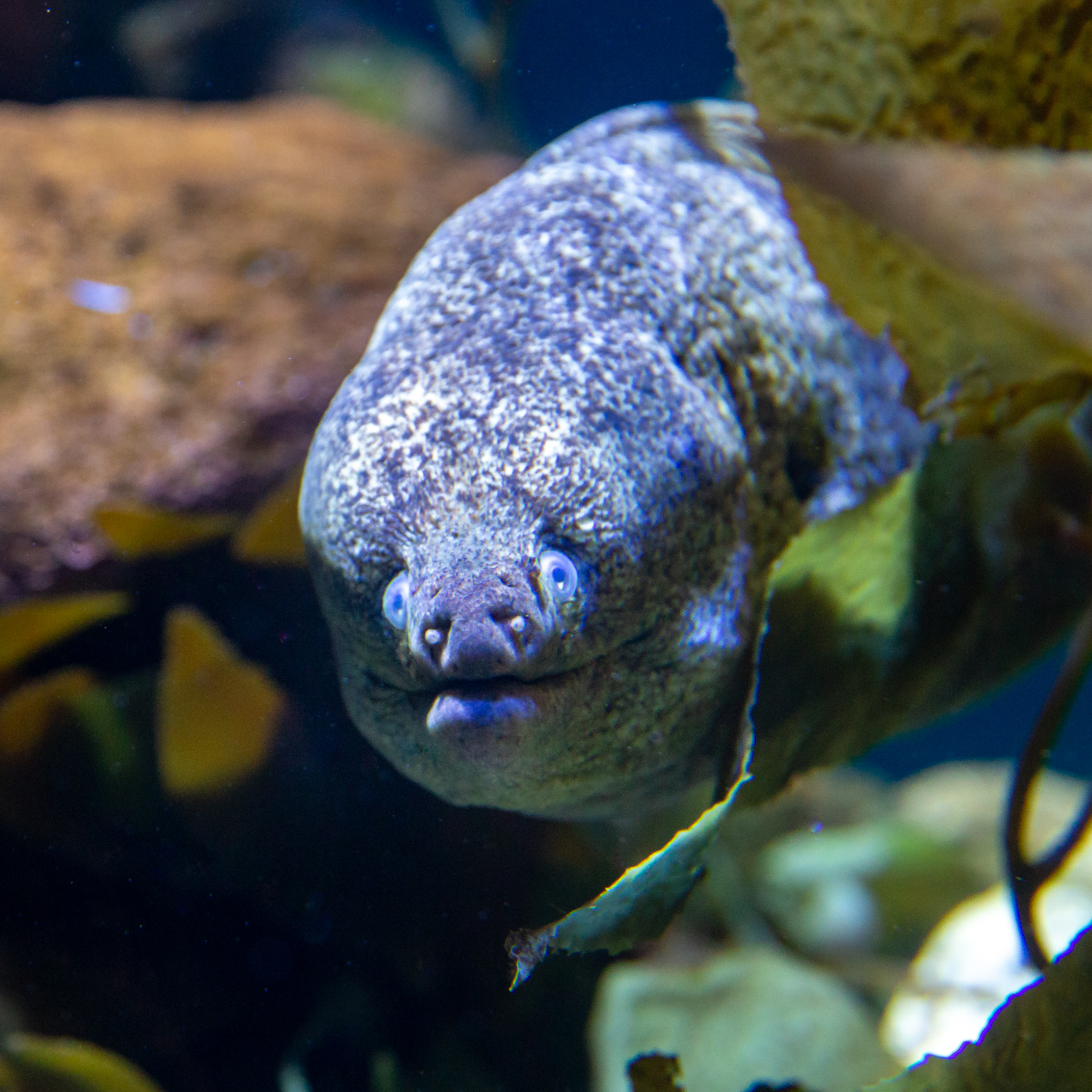
Southern California Gallery
California Moray Eel
(Gymnothorax mordax)
California moray eels have adapted to survive in the rocky reef habitat. These eels hide in between the rocks and poke their heads out to wait for prey. Once it grabs onto its prey, the eel has a second set of jaws, or pharyngeal jaws, to help pull the prey into the eel’s stomach. Eels breathe through their mouths, which is why they have their mouths open.
